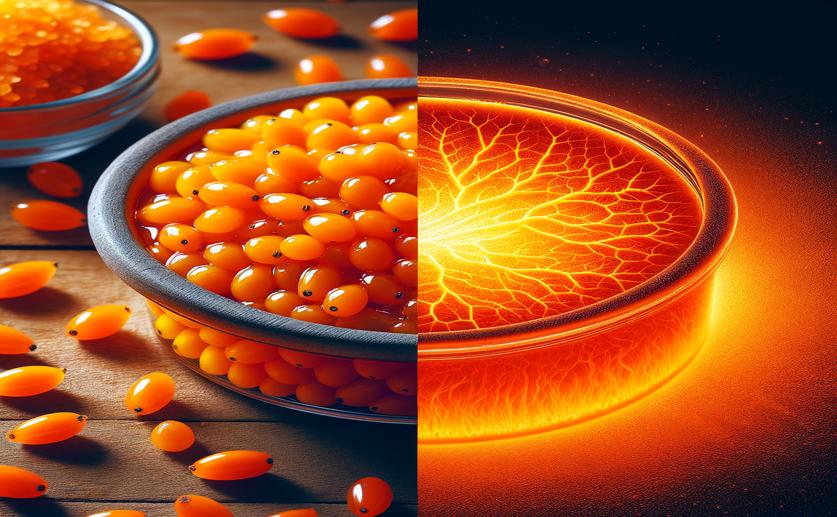
How Sea Buckthorn Pulp Develops Key Compounds During Pasteurization
Jim Crocker
18th September, 2024

Image Source: Natural Science News, 2024
Key Findings
- The study from Beijing Forestry University examined how pasteurization at 80°C for 20 minutes affects the flavor and aroma of sea buckthorn pulp (SBP)
- Pasteurization reduced fruity esters by 20.25% due to restricted metabolism of unsaturated fatty acids
- Caramel and toast-like furans increased by 136.40% because of the enhanced Maillard reaction during pasteurization
References
Main Study
1) The anabolism of volatile compounds during the pasteurization process of sea buckthorn (Hippophae rhamnoides) pulp.
Published 17th September, 2024
https://doi.org/10.1007/s13197-024-05943-z
Related Studies
2) Identification of the cooked off-flavor in heat-sterilized lychee (Litchi chinensis Sonn.) juice by means of molecular sensory science.
3) Spotlight on release mechanisms of volatile thiols in beverages.
4) Development of volatile organic compounds and their glycosylated precursors in tamarillo (Solanum betaceum Cav.) during fruit ripening: A prediction of biochemical pathway.
5) Why is sea buckthorn (Hippophae rhamnoides L.) so exceptional? A review.



 16th August, 2024 | Jenn Hoskins
16th August, 2024 | Jenn Hoskins